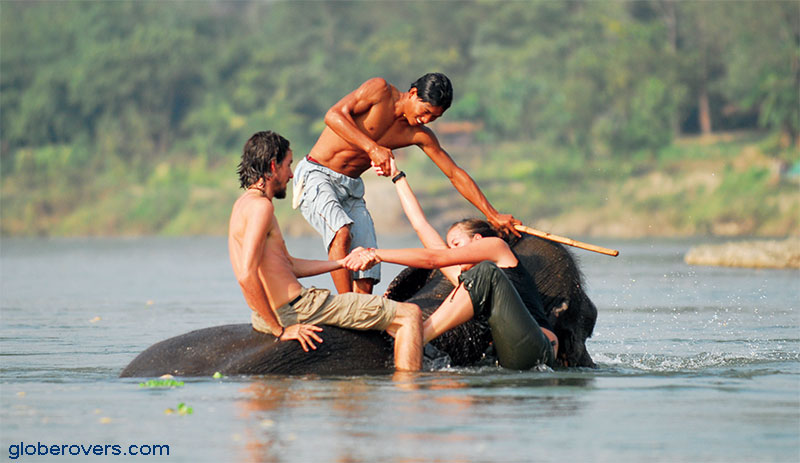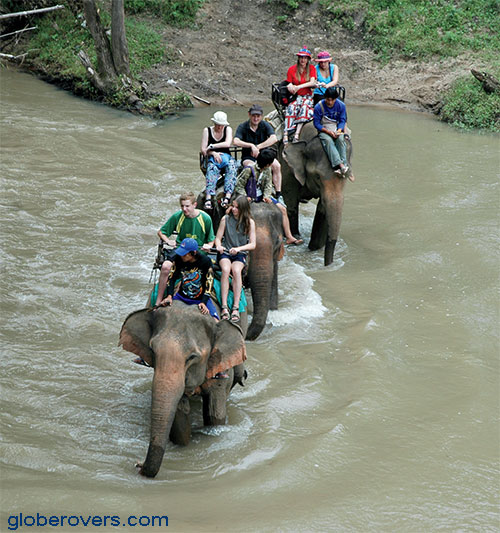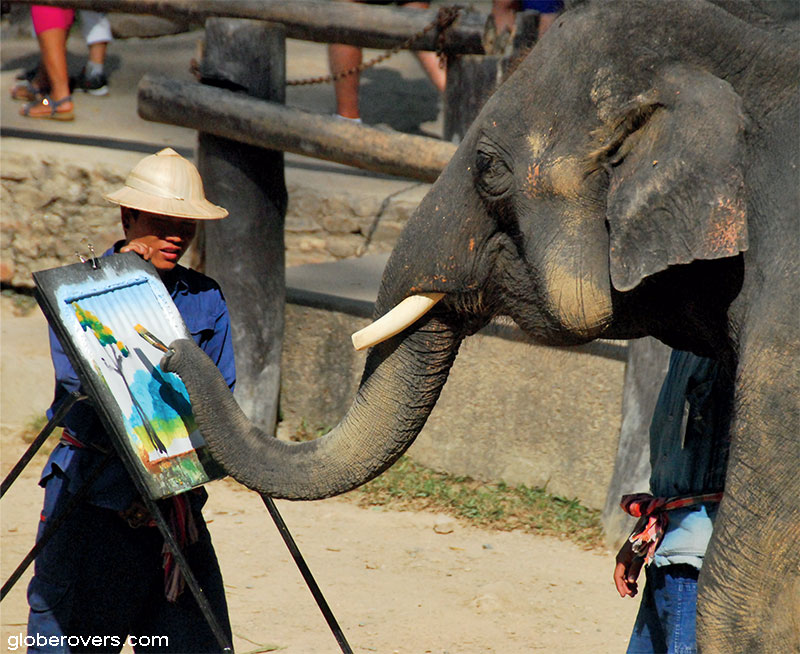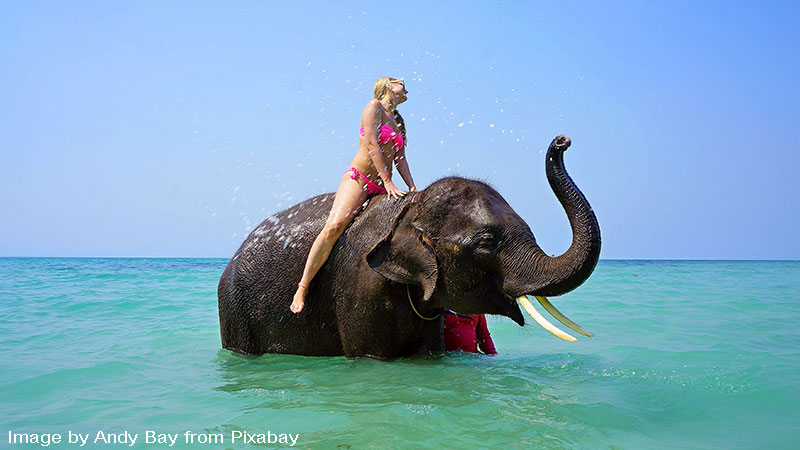
By Chloe Groom, Norwich, United Kingdom. Chloe is a 21-year-old undergraduate from the University of Lincoln in the UK. She’s about to graduate with a journalism degree, and has aspirations in the travel journalism industry. Chloe mostly enjoys writing about sustainability within travel, human and animal rights and the environment. Her top travel experience was feeding reindeer in the Artic Circle in Finland, but after graduation hopes to explore countries outside of Europe, by teaching English as a foreign language in Asia.
Torturous Tourism – Ever hear of this term? Let me explain: An elephant back ride is the epitome of genuine cultural experience for a lot of travellers and gap year adventurers, particularly in Asian countries like Thailand and Cambodia.
But the reality of domesticating these animals is much less romantic. Elephants are wild animals, and the truth behind their use in tourism would likely shock and horrify those taking part.
Ultimately, elephants aren’t designed for carrying heavy weight on their backs. According to Fran Duthie from Elephantics, a charity dedicated to the safety of elephants: “carrying just one adult on its back can cause the elephant pain, sores, and potentially even spinal injury and internal health issues.” A howdah, which is a carriage or seat, is positioned on the back of the elephant, and it has been known for up to six people to ride at one time.

Riding an elephant is the most popular tourist activity involving the animals, and tour providers often falsely reassure tourists. 19-year-old travel enthusiast, Sam Varley, rode an elephant during a trip to Kerala in the south of India. He said it was a small company, “where they explained the feeding routines and said they wash and play with them” to put tourists at ease. He was told that those working with the elephants could tell when they were happy, and they were only ridden when in good spirits.
According to, Elephantics, latest statistics estimate that over 3,000 elephants are used as tourist attractions in Asia alone – but tourists rarely understand the consequences of their novelty activities.
Before they can be used for tourist activities, baby elephants must be separated from their mothers, and domesticated quickly through a process known as Phajaan, which literally means ‘to crush’, and is also referred to as ‘breaking the spirit’. It involves barbaric treatment such as shackling, starving and beating, particularly sensitive areas like their inner ears and trunks. The pain of the process forces the animals into submission, meaning they can be controlled and used for tourist’s amusement.

Kim Tanner and her daughter, Ella Haynes, have seen abuse and conservation of these animals first hand. Three years ago, Kim visited Amber Fort in Jaipur, India, where elephants were used to transport tourists.
She said: “We weren’t specifically told we’d be riding an elephant; we joined the queue as told, which ended at a platform where we sat on the board on top of the elephant. The mahoot assured us that the elephants were well treated, well fed and only worked a certain number of rides a day. Not sure they did. I was uneasy, as there seemed an endless stream up and down the route to the Amber Fort.”
The Jaipur government, who even fix rates for the touts, approves these elephant rides, despite the impacts on the animals. It is even advertised online that, although conditions for the animals have ‘improved’ in recent years, the fleet of 80 elephants carry up to 900 visitors per day. It also states that the hot summer sun is taxing on them, and particularly visitors from Western countries may be ‘disgusted by the treatment.’
Following the experience, Kim volunteered at the Phuket Elephant Sanctuary in Thailand last year. She said: “they were pushing sustainability. Nobody was allowed to wash or ride elephants, just feed them, and follow them through their part of the forest.” She noticed: “In Phuket, the elephants were more attentive and relaxed.”

Kim’s group were allowed to follow a blind elephant that was walked in the jungle, as well as feed the elephants but touching of any kind, such as riding and bathing was prohibited. Comparing her experiences in Jaipur and Phuket, Kim said: “The sanctuary was very different. They were very knowledgeable and not afraid to admit the horrors that happened. Part of the day was to watch a video on rescue elephants and how they were captured originally and had their spirits broken.”
Her daughter, Ella, volunteered at the Elephant Nature Park in Chiang Mai, as part of a Challenges Abroad volunteer scheme. The park rescues elephants from abusive tourism such as riding, logging and painting, and are committed to educating visitors on the dangers of animal tourism.
She said: “Visiting the sanctuary was a massive shock as you actually see the harm and injuries to the elephants. They have photos of each one and their stories, but some things were really hurtful to watch and lots of people had to look away.”
Since visiting the sanctuary, Ella said she takes a lot more care researching her trips, and pays particular attention to how animals are treated when they’re involved in tourism.

Ms Duthie from Elephantics explained that it could be difficult to distinguish organisations that help elephants, and those that harm them. She said: “It is so very important to do your research before going on a trip to one of the countries that promote elephant attractions such as riding an elephant. Research articles on the tour operators as to what activities they offer. Do they use a bull hook or other objects to hit elephants with? Check independent reviews and photographs posted online by visitors.”
She also advises that visitors who witness cruel practices while on tour should post their experiences online so other people can see them and avoid going on these tours.
The charity offers an extensive list of ethical elephant experiences all over the world in Asia, Africa and the USA, which you can access via their website.


